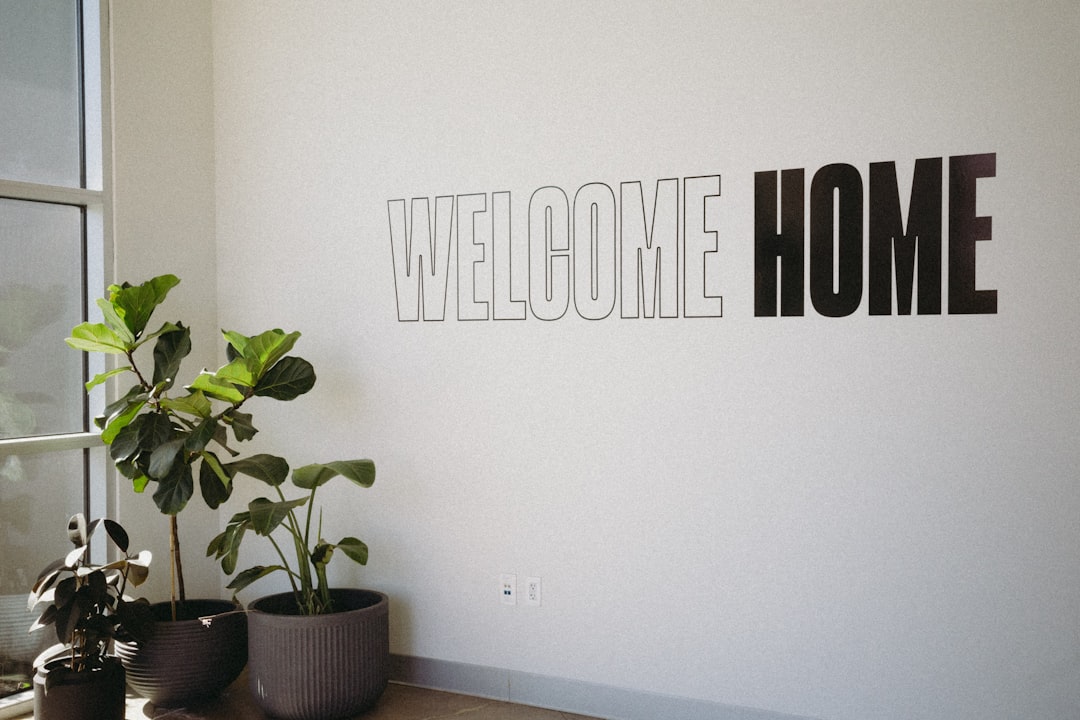

Engage prospects with a scan and streamline customer engagement with FREE QR code marketing tools by Sona – no strings attached!
Create a Free QR CodeFree consultation

No commitment

Engage prospects with a scan and streamline customer engagement with FREE QR code marketing tools by Sona – no strings attached!
Create a Free QR CodeFree consultation

No commitment
QR codes have evolved from a novelty to a strategic powerhouse in bridging print and digital. For home improvement businesses, these codes represent an effective way to boost customer engagement, streamline project workflows, and accelerate decision-making, all without requiring app downloads or complex setups.
Home improvement is an industry rooted in physical spaces and relies heavily on seamless touchpoints between offline signage, print materials, and online resources. A persistent industry frustration is that high-value prospects interact with traditional collateral such as yard signs and brochures but do not take the next step, leading to lost opportunities that rarely get tracked or followed up. QR codes help address this challenge by allowing every printed or on-site asset to become a measurable customer touchpoint, from estimate requests to project consultations.
By widening the funnel between in-person interaction and digital engagement, QR codes empower home improvement businesses to modernize traditional marketing, reduce friction in customer experiences, and deliver data-driven campaigns that convert fleeting interest into measurable business results. This approach captures prospects who would otherwise go unmeasured or unpursued.
QR codes bridge the gap between physical touchpoints and digital outcomes, making it easier to reach goals like faster lead capture, streamlined service requests, and closed sales. Many home improvement businesses miss out on high-intent customers because traditional tracking and manual follow-ups fall short; potential leads who engage offline often remain anonymous and unpursued, leading to a significant loss of opportunity.
To improve conversion, start by replacing analog friction points with QR-enabled experiences. Printed brochures can point to an instant quote form, door hangers can route to a same-day service scheduler, and showroom placards can link to financing prequalification. When every offline interaction routes to a relevant digital action, you will capture more leads at the moment of interest and build a reliable feedback loop that reveals what actually drives revenue.
Modern QR platforms such as Sona QR support this transformation with dynamic destinations, attribution, and CRM integrations. By integrating scan data with Sona.com, teams can link offline interest to pipeline stages and closed revenue, turning passive interest into accountable growth.

Home improvement marketing strategies increasingly rely on overcoming the barrier between offline and online engagement. A common frustration is the lack of visibility into anonymous traffic. When prospects pick up a flyer, notice a yard sign, or walk away from a home show booth, their intent is often lost if no action is taken in the moment. QR codes reduce this friction by transforming every business card, flyer, or on-site sign into an instant digital touchpoint where customers can schedule consultations, access project galleries, compare materials, explore financing, or leave Google reviews with just one scan.
Dynamic QR codes deliver agility that is vital in home improvement. Promotions change with the season, material availability shifts, and price updates are frequent. With dynamic codes, you can update destinations without reprinting assets. For example, the same showroom poster can switch from spring window replacement offers to fall gutter cleaning specials. This flexibility lowers cost while preserving momentum across campaigns and seasons.
In short, QR codes create measurable, low-friction bridges from a homeowner’s first glance to their first action. The result is less wasted spend, more qualified conversations, and a clearer understanding of what moves buyers forward.

Home improvement businesses need flexible QR formats to match diverse workflows, from emergency repair to long-cycle remodels. Choosing the right format for each touchpoint prevents drop-off and increases the odds that a curious homeowner becomes a qualified lead.
Dynamic QR codes are particularly valuable because they allow you to update destinations, swap offers, and run A/B tests without reprinting. They also enable scan-level analytics to reveal which assets deliver real opportunity. Static codes are best for evergreen materials such as warranty cards or installation manuals that will not change over time.

Despite high foot traffic and frequent local engagement, many home improvement businesses lack a reliable way to connect offline encounters with actual revenue. QR codes placed in high-intent contexts create a trail of measurable activity and give teams the insight needed to double down on what works.
These placements modernize legacy print, convert anonymous interest into measurable engagement, and make it easier to prioritize media that consistently drives booked jobs.

Industry teams often struggle to convert in-store curiosity and event interest into booked appointments, especially when prospects leave without a clear next step. QR codes remove friction by guiding each intent signal to the right action.
Each of these use cases shortens the buyer journey and transforms passive interest into active steps. They also provide clear signals for sales and marketing teams to route prospects by intent, such as urgent service versus planned remodeling.
Offline interest has long been difficult to retarget because it rarely enters your marketing systems. With QR codes, every scan carries context: where it happened, why the person scanned, and which action they took next. That context becomes the foundation for precise audience segments and timely follow-up.
First, instrument your touchpoints with unique, dynamic codes. A showroom vanity display should use a different code from a roofing yard sign or a mailer for kitchen refacing. Then add UTM parameters and campaign tags for service line, location, and offer. Each scan automatically builds lists you can sync to your CRM and ad platforms for relevant outreach.
With Sona QR, every code becomes a smart entry point into your funnel. Combined with Sona.com, you can track how scans interact with other touchpoints such as website visits and emails, then optimize spend around audiences that repeatedly convert.
Home improvement firms often run a patchwork of print, digital, and in-person tactics. QR codes unify these touchpoints by making every impression scannable and measurable, then feeding the resulting data into your marketing stack. The outcome is a more connected customer journey from initial awareness to scheduled appointment and job completion.
Use QR codes to link offline materials to the next best action online. A direct mail piece can route to a neighborhood-specific offer, a truck decal can launch a one-tap estimate request, and a showroom kiosk can present financing preapproval. Every scan tells you which channel and message sparked movement, so you can allocate budget accordingly.
QR codes serve as the offline onramp to your digital marketing engine, while also unlocking data from channels that were previously hard to measure. With a centralized platform like Sona QR, you can manage codes at scale, monitor performance, and sync activity with your CRM and ad platforms.
Many teams struggle to move from concept to measurable impact. The following checklist turns ideas into results by ensuring every scan connects to a business outcome, every asset is test-ready, and every touchpoint is trackable.
Define what success looks like for this campaign and tie it to a clear outcome. For example, during peak storm season, a roofing company may prioritize emergency inspections and schedule availability. In winter, an HVAC firm may focus on furnace tune-ups with next-day booking.
Choose the right format and destination based on the campaign. For trackability and flexibility, dynamic codes are best. For evergreen content that will never change, static codes are sufficient.
Good design and rigorous testing protect scan rates in real-world conditions. Treat the QR like a call to action that needs clear framing and a compelling reason to scan.
Roll out codes in places where your audience is already engaged. Prioritize assets that combine strong visibility with relevant timing.
Treat QR campaigns as living programs. Monitor the data, experiment with offers, and adjust placements in response to performance.
Technology makes it possible to automate these steps and tie data directly to customer records. The result is accountability, speed, and continuous improvement across campaigns.
A major frustration for home improvement companies is spending on campaigns that produce no measurable return. Counting scans alone is not enough. True value comes from understanding what a scan leads to across the entire buyer journey, from first contact to booked job and payment. When you connect scan events to downstream outcomes, you can prioritize channels and offers that generate real revenue.
Advanced QR analytics turn offline moments into data points you can act on. With dynamic codes and a connected platform, you can see where and when scans occur, which device or media drove them, and how those interactions influenced bookings and sales. You can also detect patterns such as neighborhoods with higher conversion for roofing inspections or display types that consistently lift flooring consultations.
With Sona QR and Sona.com, you can go beyond engagement to true performance management. Sona QR captures detailed scan data and Sona.com links that activity to pipeline and revenue through CRM sync, identity resolution, and multi-touch attribution. This gives you the evidence to invest where it counts and the agility to improve results over time.
Sustaining growth after launch requires disciplined attribution, consistent follow-up, and creative deployment. Avoid over-relying on scan counts or generic destinations. Instead, use QR codes to deepen insight and steer each scanner to a next step that matches their context.
Think of QR codes as the connective tissue for customer journeys that move across print, field operations, and digital channels. Small refinements in tagging and placement often produce large gains in booked appointments and upsells.
Creative examples include QR codes on temporary fencing that prompt neighbors to request the same service, codes on sample boards that save selections to a homeowner’s project portal, and codes on invoices that drive reviews and referral bonuses.

Applied examples show how QR codes transform offline interest into booked business. The common thread is a relevant destination, a compelling call to action, and clear attribution that guides future investment.
Look for moments where curiosity is high and action is natural. Pair a strong value exchange with a scan invitation, then use dynamic links and analytics to learn and improve.
Optimizing ROI requires both technical rigor and field awareness. Clear calls to action, scannable design, and CRM connections make the difference between curiosity and conversion. Underestimating environment, distance, or follow-up workflows is the most common source of underperformance.
Avoid sending every scan to a generic homepage or long general purpose form. Homeowners are most likely to act when the destination matches the context that sparked their interest. Tie each code to a page or action that solves a specific need and reinforces the promise in your CTA.
QR codes have become central to growth and measurable marketing in home improvement. Embedding QR touchpoints across every channel, from signage and flyers to vehicles and events, enables businesses to capture actionable interest in real time, close attribution gaps, and identify high-value audiences with clarity. This modern tactic reduces the risk of missed opportunities or untracked leads and transforms every physical interaction into a digital opportunity for conversion, upsell, or cross-sell.
As the industry demands more reliable ways to connect offline engagements to real revenue, QR codes stand out as a proven, data-driven bridge. Start by selecting one or two high-impact use cases, choose dynamic QR codes with proper tagging, and deploy with a strong CTA and scannable design. With platforms like Sona QR and Sona.com, you can generate codes in minutes, monitor performance, sync with your CRM, and attribute each scan to pipeline and closed jobs. Start creating QR codes for free.
QR codes have transformed home improvement businesses from traditional marketing efforts into dynamic, measurable growth engines. Whether it’s attracting new clients, enhancing in-store and on-site experiences, or streamlining project follow-ups, QR codes enable instant, mobile-friendly interactions that capture real-time data—turning every marketing material into a powerful conversion tool. Imagine knowing exactly which brochures, flyers, or showroom displays drive customer inquiries and sales, and being able to optimize campaigns on the fly.
With Sona QR, you can easily create dynamic, trackable QR codes that update instantly without costly reprints, connecting every scan directly to your revenue metrics. This means smarter marketing decisions, higher customer engagement, and more closed deals for your home improvement business. Start for free with Sona QR today and transform every scan into a meaningful step toward growing your business.
QR codes improve customer experience by bridging offline materials with digital actions, enabling instant scheduling, quote requests, product exploration, and feedback without app downloads or complex setups.
Home improvement stores can use QR codes on brochures, yard signs, door hangers, showroom displays, truck decals, direct mail, event booths, and invoices to provide instant quotes, schedule services, access financing, request reviews, and share product demonstrations.
QR codes streamline operations by capturing leads in real time, automating follow-ups through CRM integrations, enabling quick appointment scheduling, facilitating urgent service requests, and providing actionable data to optimize marketing and sales efforts.
Benefits include converting anonymous offline interest into measurable leads, increasing customer engagement, reducing friction in the buying process, providing real-time analytics, improving attribution of marketing spend, and enabling targeted retargeting campaigns.
Businesses can leverage QR codes by placing them strategically on high-traffic assets, linking to relevant digital actions like instant quotes or financing, using dynamic codes for flexible messaging, tracking scan data for insights, and automating personalized follow-ups to convert interest into booked jobs.
Use Sona QR's trackable codes to improve customer acquisition and engagement today.
Create Your FREE Trackable QR Code in SecondsJoin results-focused teams combining Sona Platform automation with advanced Google Ads strategies to scale lead generation

Connect your existing CRM

Free Account Enrichment

No setup fees
No commitment required

Free consultation

Get a custom Google Ads roadmap for your business






Launch campaigns that generate qualified leads in 30 days or less.
